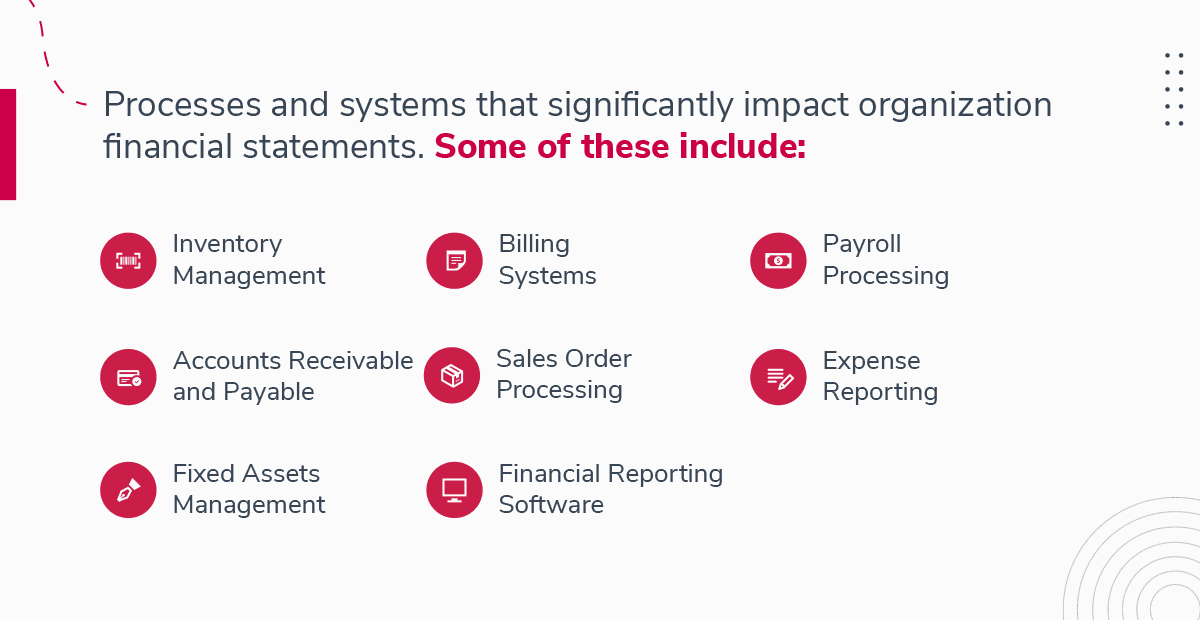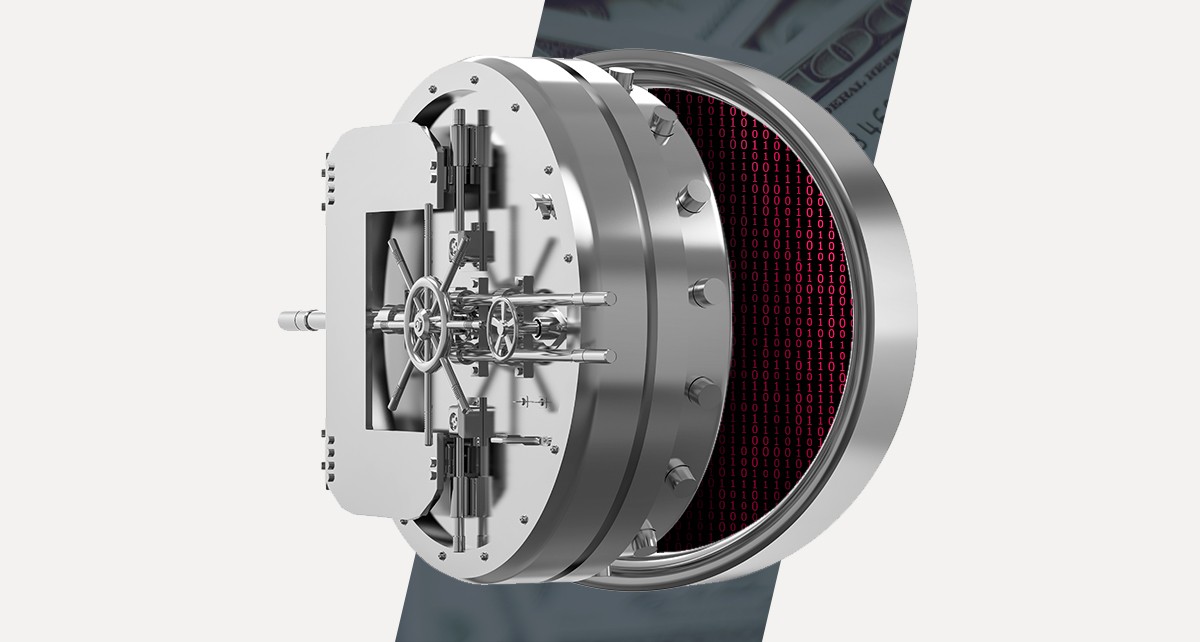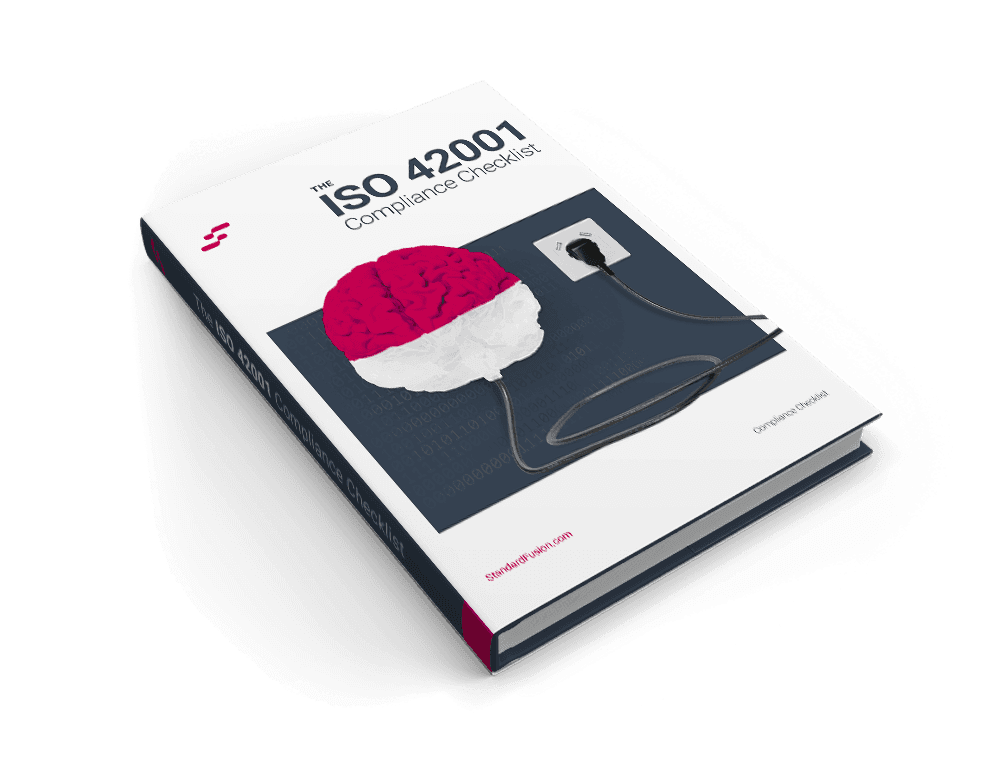Published on: Feb 1, 2023
| Updated: Apr 1, 2025
ITGC SOX: The Foundations and Key Steps For Compliance [Checklist Included]
IT General Controls (ITGCs) are a critical part of SOX compliance to ensure the integrity of financial reports and business practices. ITGC SOX ensures that your organization's IT systems and processes are secure, well-governed, and aligned with your business objectives.
In this article, we'll dive into the details of IT General Controls, explaining what they are and how you can ensure that your organization has the right ITGCs in place to meet your SOX compliance requirements.
Take advantage of the SOX ITGC Checklist to simplify implementation!
Let's get started.
What is Sarbanes-Oxley Act (SOX)?
In 2002, the Sarbanes-Oxley Act (SOX) was passed by the United States Congress to protect shareholders and the general public from accounting errors, incorrect and fraudulent practices in enterprises and improve corporate disclosures' accuracy. As a result, organizations must now record, test, maintain, and review controls impacting financial reporting processes to comply with the Sarbanes Oxley Act of 2002 (SOX).
As a result, Section 404 mandates publicly listed firms and those seeking an initial public offering (IPO) to enlist the services of accounting entities for an autonomous evaluation. SOX compliance is not required for nonprofit organizations and private companies.
What is ITGC SOX?
IT General Controls (ITGCs) are a vital part of SOX compliance. Designed to ensure the integrity, security, and confidentiality of financial data, IT controls must protect the outcome of financial statements.
How to define which IT systems should be included in the SOX program? To define which IT systems should be included in SOX scope, organizations need to assess the following requirements (at least):
If the system processes any data that impacts financial statements;
If the system inputs data to other systems processing financial information;
If processes related to the system could materially impact financial statements;
If changes in the data processed in the system would impact the organization's financial results.
Examples of processes and systems that significantly impact financial statements
Inventory Management Systems: Ensuring accurate tracking and valuation of inventory directly affects financial reporting.
Billing Systems: Precise billing processes are crucial for revenue recognition and overall financial accuracy.
Payroll Processing Systems: Accurate payroll calculations and disbursements have direct implications on financial statements.
Accounts Receivable and Accounts Payable Systems: Timely and accurate recording of receivables and payables influences the company's financial health.
Sales Order Processing Systems: Efficient handling of sales orders is vital for recognizing revenue accurately.
Expense Reporting Systems: Proper tracking and reporting of expenses impact the overall financial picture.
Fixed Assets Management Systems: Accurate recording and depreciation of fixed assets contribute to financial statement accuracy.
Financial Reporting Software: The software itself, responsible for consolidating financial data, is a critical component.
How to secure these controls?
Although SOX doesn't focus on cybersecurity, stakeholders should prioritize security due to the substantial impact of cyber threats on finances and reputation.
To ensure compliance with ITGC requirements, managing sensitive data is a critical component. Companies must place controls around sensitive information such as Personally Identifiable Information (PII), cardholder data, and sensitive financial data.
A reactive, one-off approach might temporarily satisfy compliance mandates, but it is not a long-term solution. Instead, adopting a holistic approach to data security is recommended. This involves:
Identifying Data Types: Understand what kinds of sensitive data your company holds.
Data Storage Locations: Know where this data is stored to effectively manage it.
Data Pathways: Map out the paths your data travels and how it is accessed.
Retention Requirements: Be aware of how long data should be retained and when it must be deleted.
A proactive data management program is essential for safeguarding sensitive data. This includes:
Applying specific data management policies.
Protecting data from unauthorized access.
Monitoring data access and changes, including temporary and emergency changes.
Deleting data when it is no longer required.
By implementing these strategies, companies can better protect themselves against the financial and reputational damage caused by cyber threats, all while ensuring compliance with essential regulations.

Understanding the Importance of Responsibilities and Processes in ITGCs
Understanding the link between your IT systems and the business operations they support is crucial. This connection allows you to effectively manage risks within your responsibilities. By identifying which business processes are vital and rely heavily on your IT systems, you can better understand what controls need to be implemented in your unique environment to ensure smooth operations.
Why It Matters:
Precision in Control Implementation: Recognizing which systems and data your business depends on helps to tailor controls to protect these critical areas.
Risk Assessment and Management: Pinpointing your operations' vulnerabilities allows for a strategic approach to managing these risks. It's essential that identified risks are practical and approved by management to ensure alignment with business goals.
Audit Preparation: In preparation for audits, such as those required by the Sarbanes-Oxley Act (SOX), establishing a clear understanding of your responsibilities aids in prioritizing risk management efforts. This understanding also serves as a solid foundation for discussions with auditors about the significance of certain areas being audited.
By taking these steps, you not only effectively manage and justify risk but also create a roadmap that aligns your control efforts with overarching business objectives. These strategies not only enhance compliance but also strengthen the integrity and reliability of your IT General Controls (ITGCs).
The Role of ITGCs in an Organization's IT Systems
In today’s complex business environment, IT General Controls (ITGCs) are indispensable for securing the integrity and effectiveness of IT systems and applications across various organizational departments. These controls are foundational to ensure that the technology supporting business processes remains robust and reliable.
Safeguarding Systems and Data
ITGCs play a critical role in protecting the systems that various departments, such as finance, human resources, purchasing, and sales, rely on. They help make sure that the enterprise resource planning (ERP) systems used by these departments, such as Oracle or SAP, function without exposure to undue risk. This defense against risk is crucial because it safeguards the quality and accuracy of the data entered into such systems.
Intersection with Regulatory Compliance
These controls are not just about internal risk management but are also aligned with external regulatory requirements like the Sarbanes-Oxley Act (SOX). SOX compliance demands that organizations establish both business and IT control measures that ensure the reliability of financial reporting. In this regard, ITGCs are central to SOX IT controls, which include ensuring that system processes are accurate, complete, and free from errors that could affect financial data integrity.
Ensuring Reliable Financial Reporting
Ultimately, ITGCs ensure that the data supporting your financial statements is dependable. By overseeing general IT controls, organizations can instill confidence in their data's precision, reflecting true financial performance as reported. This ensures not only regulatory compliance but also enhances internal and external stakeholder trust.
How Do ITGCs Differ from IT Application Controls (ITAC)?
Understanding the distinction between IT General Controls (ITGC) and IT Application Controls (ITAC) is crucial for ensuring robust organizational security.
Nature and Scope
ITGCs encompass a broad range of control mechanisms that include things like access management, change management, and operational practices. They form the foundation of your IT environment and are designed to ensure the overall functioning and reliability of IT operations.
ITACs, on the other hand, focus on specific aspects within IT systems. They are more narrowly defined and deal with controls related to specific applications and data processing within those applications.
Functionality
ITGCs provide an overarching framework. They ensure that applications are functioning properly, infrastructure is stable, and standard operating procedures are adhered to across the board.
ITACs are engaged in the minutiae. They consist of three main types:
Input Controls: Ensure the accuracy and authenticity of data entering the system.
Processing Controls: Confirm data is processed in an expected and error-free manner.
Output Controls: Verify that the data leaving the system meets integrity requirements.
Role in Security
ITGCs support overall IT infrastructure stability and security, offering a macro view of the environment's safety and reliability.
ITACs provide a micro perspective by concentrating on the functionality and accuracy of specific applications, making sure that transactions are correctly processed.
In essence, while ITGCs set the groundwork for healthy IT operations across the entire landscape, ITACs are laser-focused on the performance and accuracy of individual applications. Each plays a pivotal role, complementing the other to safeguard an organization's IT ecosystem.
SOX ITGC Compliance
A SOX ITGC audit aims to determine whether the ITGCs are adequate to guarantee the integrity, accuracy, and completeness of the financial reporting system. However, to enable seamless SOX compliance initiatives and successful audits, you must do ITGC correctly.
But how?
Organizations must record, test, maintain, and review controls impacting financial reporting processes in order to comply with the Sarbanes Oxley Act of 2002 (SOX). These internal controls are methods for identifying and preventing errors in corporate operations that could influence the accuracy or integrity of financial reports.
Companies should implement and assess these practices at every stage of the financial reporting cycle. Also, Internal auditors should conduct frequent compliance audits to ensure SOX compliance.
ITGCs focus on the following domains:
Access Management: The aim is to guarantee that access to data and programs is only available to approved individuals. A simple example can be a standard user account that is active and has access to sensitive data. Data corruption, deletion, or leakage may occur as a result of unauthorized access to sensitive data if the access provisioned is not monitored and regulated. By the way, check this article to see how you can create value with data quality and GRC.
Patch Management: Companies should regularly update applications, systems, and networks, as well as patch vulnerabilities or new features. When users fail to update their programs regularly, they are putting their companies in danger of an attack due to a vulnerability in the unpatched program. Hence, ITGC requires regular updates and persistent monitoring of an organization's applications, systems, and network service-level guarantees.
Change Management: The goal of this domain is for application changes to be tested and authorized before they are published for production. Organizations should assess changes to the app regularly. Finally, the development, testing, and production environments are distinct, segregated, and subject to approval.
Data Backup: Organizations must perform and manage data backups often and ensure this process follows policies/procedures/best practices.
Monitoring your IT controls is key to reducing risks and keeping your organization safe. Let's review some examples.
Monitoring IT Controls
Another relevant component of a SOX program is the continuous monitoring of IT controls. This process plays a pivotal role in ensuring effective IT General Controls (ITGCs) by consistently overseeing and managing potential risks within critical systems.
Continuous controls monitoring identifies risks in financial transactions from applications such as Oracle ERP Cloud, SAP, Microsoft Dynamics, and many others. By doing so, it not only highlights vulnerabilities but also addresses them through built-in remediation capabilities.
Here are some examples that can put your IT activities and organization at risk:
Outdated Application Server: Imagine an application server not updated to match current threats. This exposes the organization's critical data to serious vulnerabilities, similar to leaving a door unlocked in a risky area.
Inadequate Access Controls: If every employee could create hidden accounts ('stealth users'), it would pose a massive security risk. This scenario is like giving every person a master key, allowing unauthorized access to sensitive data and financial resources.
Obsolete Security Due to Poor Patch Management: Consider a system with outdated security patches, akin to an old, rusted lock. Such negligence can give attackers an easy entry point, allowing them to exploit vulnerabilities, steal data, or destroy crucial intellectual property.
But these are just the tip of the iceberg when it comes to weaknesses in IT general controls (ITGC) frameworks. Delving deeper, several common issues frequently surface:
Inadequate User Provisioning and De-Provisioning: Poorly managed creation and deactivation of user accounts can lead to excessive permissions or lingering access after employee departures, akin to leaving spare keys with ex-employees.
Insufficient Audit Logs: Without proper logs, you can't conduct thorough incident investigations, much like trying to solve a mystery without any clues.
Deficient Software Development Controls: Lack of controls allows unauthorized changes to your ERP configuration or transaction records, opening doors to potential data manipulation.
Insufficient Configuration Monitoring: Changes in control execution can go unnoticed, creating vulnerabilities that could lead to fraud or data breaches.
These weaknesses can culminate in significant security incidents. For instance, systems left vulnerable by poor patch management can be easily breached, allowing hackers to bypass access controls and alter or steal critical data. Addressing these vulnerabilities is paramount to maintaining robust IT security and safeguarding your organization's assets.
Steps for Performing an ITGC Risk Assessment
Embarking on an ITGC (Information Technology General Controls) risk assessment requires a methodical approach, ensuring that all aspects of potential risk are carefully evaluated. Here's a breakdown of the essential steps involved:
1. Identify Potential Threats
Begin by pinpointing any actions or events that might threaten your IT infrastructure. These could range from natural disasters to cyber-attacks, or perhaps system downtime, each possessing the potential to disrupt operations or harm assets.
2. Analyze System Vulnerabilities
Next, examine your systems for any weaknesses that might be exploited by identified threats. This includes outdated software, unpatched systems, or misconfigured security settings. A resource like the NIST National Vulnerability Database can provide a comprehensive list of known vulnerabilities to watch out for.
3. Assess Potential Impact
Explore the consequences if a threat successfully exploits a vulnerability. This involves considering damage such as data breaches, operational downtime, or financial losses. Evaluating the impact also includes understanding potential reputational harm and compliance penalties.
4. Determine Likelihood
Evaluate how probable it is for each threat to occur. This is often quantified through historical data and expert analysis, indicating which risks are more imminent and require immediate attention versus those that are less likely.
5. Perform Risk Evaluation
Consolidate your findings to gauge the overall risk level facing your IT systems. This involves combining your assessments of the potential impact and likelihood, often resulting in a high, medium, or low risk rating.
6. Develop Mitigation Strategies
With the risk levels identified, formulate strategies to mitigate these risks. This might include implementing stronger security controls, updating software, enhancing user training, or investing in more advanced monitoring solutions.
7. Continuous Monitoring and Review
Risk assessment is not a one-time event. Establish continuous monitoring processes to track the effectiveness of mitigation measures and adjust your strategies as new threats and vulnerabilities emerge.
By following these steps, organizations can not only meet ITGC compliance requirements but also bolster their overall IT security posture, protecting both data and assets more effectively.
What are the Consequences of Insufficient ITGCs During a SOX Audit?
Inadequate Information Technology General Controls (ITGCs) during a Sarbanes-Oxley (SOX) audit can lead to several serious repercussions. Here's what organizations might face:
Inaccurate Financial Reporting: The primary aim of ITGCs is to secure the accuracy of your financial reports. If these controls are lacking, errors might slip into your data, compromising the integrity of your financial statements.
Investor Disclosures: Any issues found with ITGCs must be disclosed to investors, potentially shaking their confidence. This transparency, though necessary, may lead to concerns about the organization’s overall governance and reliability.
Loss of Business Opportunities: Poor ITGCs can raise red flags for potential customers, especially those who prioritize security and data integrity. As a result, this might discourage them from doing business, impacting revenue growth and market reputation.
Remediation Costs: Addressing deficiencies in ITGCs requires time and resources. Organizations must invest in corrective measures, which can be costly. These expenses might include hiring external consultants, investing in new technology, or retraining staff.
Security Risks: Insufficient ITGCs can expose your systems to vulnerabilities, increasing the risk of data breaches. An organization's failure to protect sensitive information can lead to legal liabilities and a damaged reputation.
Ensuring robust ITGCs not only helps maintain compliance during audits but also strengthens your organization's financial and operational stability.
Enhancing ITGC Compliance Through Best Practices:
The following best practices will serve you as a roadmap for enhancing your ITGC compliance:
Conducting Regular Audits and Assessments: Internal auditors play a crucial role in ensuring ongoing SOX compliance. Regular audits help identify potential weaknesses in ITGC and provide opportunities for continuous improvement. Consider adopting robust compliance frameworks such as COBIT or COSO to systematically address IT risks. This allows your CISO and internal audit team to conduct thorough risk assessments and identify areas needing attention.
Integrating Advanced Technologies: Utilizing advanced technologies and tools can streamline the ITGC process, making it more efficient and effective. Automation of certain ITGC aspects, like patch management and access controls, can significantly reduce the margin for error and enhance compliance. Automating controls not only improves efficiency but also reduces human error and the overall cost of compliance.
Training and Awareness: Educating staff on the importance of SOX compliance and the role of ITGC is crucial. Regular training ensures that employees understand their responsibilities and the impact of their actions on the organization's compliance posture. This awareness is key to fostering a culture of compliance and vigilance throughout the organization. Ensure that training programs include insights into managing sensitive data, which is essential for protecting against security breaches.
Continuous Improvement and Adaptation: ITGCs shouldn't be static; they need to evolve with changes in technology, threats, and business processes. Organizations should regularly review and update their ITGC practices to ensure they remain effective and aligned with current compliance requirements and technological advancements. This approach includes performing regular risk assessments to help pinpoint potential vulnerabilities and implement necessary controls.
Collaboration Across Departments: Effective ITGC compliance requires collaboration between IT, finance, and audit departments. This cross-functional approach ensures a comprehensive understanding of the risks and controls throughout the organization, leading to more effective compliance strategies. Collaboration can help your organization become more agile and prepared. Additionally, identifying responsibilities and the critical business processes reliant on your IT systems is crucial for managing risks strategically.
Protecting Critical Infrastructure: Ensure that your critical infrastructure components, such as databases, servers, and network devices, are properly managed and adhere to minimum security baselines. Regular patching and configuration monitoring are vital to prevent unauthorized access and data breaches.
By integrating these comprehensive strategies, your organization can build stronger ITGCs, effectively mitigating security risks while maintaining compliance.
SOX ITGC Checklist
The following checklist can simplify the implementation of IT general controls that are aligned with business objectives and compliance requirements.

The Benefits of ITGC and How GRC Can Help
IT General Controls (ITGC) are essential for the reliable and trustworthy execution of IT infrastructure. From the induction of business-oriented technology to the development of applications covering critical processes such as change management, configuration management, patch management, etc., ITGCs are crucial for today's digital age.
ITGCs can be challenging to understand, develop, execute, and monitor.
Why?
Because they should evolve over time as the company's technology changes in order to stay up to date with any new cybersecurity threats that arise. However, different GRC tools, like StandardFusion, can assist you by determining which ITGCs you require or detecting those that are failing and not as effective as they should be.
More importantly, GRC software can help you monitor ITGCs' performance and make the control reviews less painful and more effective. Governance, risk, and compliance platforms, like StandardFusion, provide a cost-effective and innovative approach to implementing and maintaining these controls. They automate and streamline audit reviews, optimize the process, and assure compliance.
Advantages of Control Automation in ITGCs
Control automation streamlines business processes, making them more efficient and less prone to human error. However, not every IT control should be automated. Prioritizing which manual processes to automate is key. Here are some excellent candidates for automation:
Error-prone manual controls: These controls often lead to mistakes and inefficiencies.
Processes with significant time and cost savings: Automating tasks such as user access approvals can save substantial resources.
Continuous monitoring: Automated systems allow for ongoing oversight, ensuring compliance and performance.
Intelligent audit trails: Continuous monitoring benefits internal auditors by providing detailed and accurate records.
Control automation also offers long-term cost reduction. The initial setup is a one-time expense, but the savings continue:
Lower costs for maintaining internal controls: Automation simplifies and reduces the need for ongoing manual oversight.
Fewer billable hours from external auditors: Auditors can work more efficiently, reducing costs.
Reduced internal resource allocation: Staff spend less time on compliance support, freeing them for other tasks.
By demystifying the external auditor's testing process and shortening audit cycles, automated controls enhance overall efficiency. This not only brings financial benefits but also improves the clarity and effectiveness of your ITGCs, ensuring robust governance and compliance.
Automate ITGC SOX Auditing with StandardFusion
ITGCs are critical for any business. Companies of all sizes deal with compliance, operational, and security challenges when they don't have ITGCs. These issues not only drain IT departments of time and energy, but they also jeopardize firms' reputations. Implementing ITGCs keeps everyone on track by requiring them to adhere to and work from a single source of truth while safeguarding an organization's valuable data.
StandardFusion will help you establish and manage compliance and information security programs tailored to your organization and workflow. Moreover, StandardFusion's management tools help you automate audits, controls, and policies to ensure ITGC SOX compliance.







